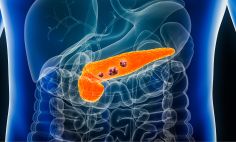Health Topics

Migraine: What you need to know
Migraine is a neurological condition (meaning that it’s a disease of the nervous system) that is associated with severe headaches and other symptoms in the nervous system and body. Migraine headaches can be very intense, often causing pain that throbs and pulses. Headaches aren’t the only symptom that can affect people with migraine: unlike other kinds of headaches (for example, tension and sinus headaches), they often come with other symptoms such as nausea, vomiting, and dizziness.
Migraine is common―about 12% of Americans have this condition. Migraine attacks happen in several stages, and untreated attacks usually last between 4 and 72 hours. They can be debilitating and may interfere with all areas of life: home, work, school, and beyond.
Symptoms
Migraine symptoms are different for different people. Some common symptoms include:
- Headache (often on one side of the head, but sometimes on both sides)
- Pain that gets worse when you move
- Nausea and sometimes vomiting
- Being unusually sensitive to light, sounds, and smells
- Feeling weak or dizzy
The two most common types of migraine are:
- Migraine with aura. Migraine auras can include changes to your visual field such as flashing lights, zigzag lines, or blind spots, as well as nonvisual symptoms such as brain fog, a numb or tingling sensation, or changes to your senses of smell, taste, and touch.
- Migraine without aura. Migraine without aura is the most common type. In these kinds of migraine attacks, you won’t experience aura but will have other migraine symptoms (for example, headache and nausea).
Causes
We don’t know exactly what causes migraine, but genes probably play a big role―most people with migraine have a family member who also has it.
Some people with migraine have different triggers. Common ones include:
- Stress and anxiety
- Certain foods and beverages
- Changes in hormone levels
- Not getting enough sleep
- Skipping meals
- Sudden weather changes
- Medication overuse, which can be caused by long-term use of certain over-the-counter and prescription medications
Who can have migraine?
Anyone can have migraine, including children. Women are three times more likely than men to experience it.
Most people with migraine:
- Have their first attack before age 40
- Have a family member who also has migraine
People with medical diagnoses such as depression, anxiety, sleep disorders, and epilepsy may also be more likely to have migraine.
Diagnosis
Talk to your doctor if you’re having migraine-like symptoms. Your doctor will ask about your symptoms, your medical history, and your family’s health history. They may do some tests to find out whether the headaches have a cause other than migraine (like a sinus infection, muscle tension, or another medical disorder).
There is no cure for migraine, but there are pharmacological (drug-based) and nonpharmacological ways to make living with migraine easier.
Prevention
Sometimes migraine attacks can be prevented before they happen with a combination of medications and lifestyle changes.
Talk to your doctor about medications and therapies to prevent migraine attacks. Your doctor might recommend migraine-specific medications or antidepressants, blood pressure medicines, and antiseizure medicines. These are usually medicines that you need to take every day. Your doctor may also suggest certain vitamins or minerals that might help.
Keep a migraine diary. Knowing your triggers is a first step to learning how to cope with migraine. Use a diary to keep track of when you’re having migraine attacks and what’s happening around that time to identify your personal triggers. When you have a migraine attack, write down:
- When the pain started (day and time)
- What you were doing when the pain started
- What you ate and drank in the 24 hours before the attack
- How many hours you slept the previous night
- The symptoms you had during the attack
- What you did during the attack, including any medicines you took
- When the pain stopped
Treatment
Treating symptoms as soon as you feel an attack coming on can keep them from getting worse. Your doctor can help you find a treatment―or a combination of treatments―that works for you.
- Over-the-counter pain relievers such as ibuprofen, acetaminophen, and aspirin can help with milder symptoms.
- Prescription medicines, including medications that relieve or prevent migraine symptoms, may also be used to address migraine. The most common classes of drugs are called “triptans” and “CGRP antagonists” (CGRP stands for calcitonin gene-related peptide). These drugs come in different forms such as nasal sprays, dissolvable tablets, and shots.
- Medical devices such as peripheral nerve and vagus nerve simulators can help treat migraine by targeting the nerves that contribute to migraine symptoms.
Be aware that taking medications too frequently (more than twice a week) can make migraine worse.
You can also get relief during an attack by:
- Resting in a quiet, dark room
- Closing your eyes
- Cooling your forehead with a wet cloth or an ice pack
- Drinking lots of liquids
With the right combination of prevention and treatment, most people can find some relief.
By the numbers
- 1 billion people worldwide have migraine
- 1 in 5 women
- 1 in 16 men
- 1 in 11 children







